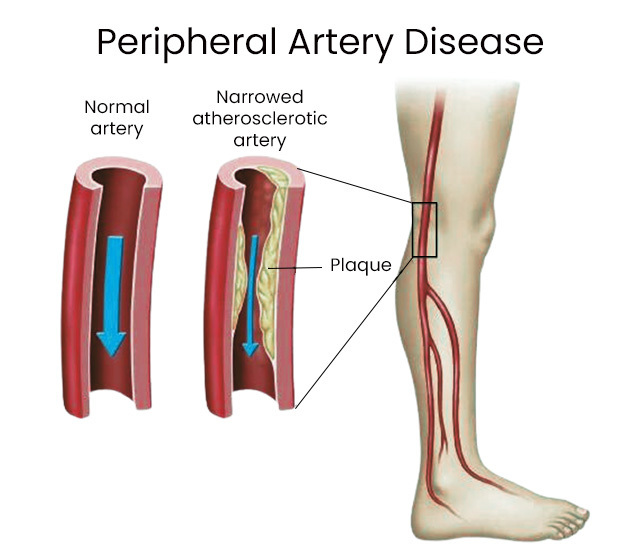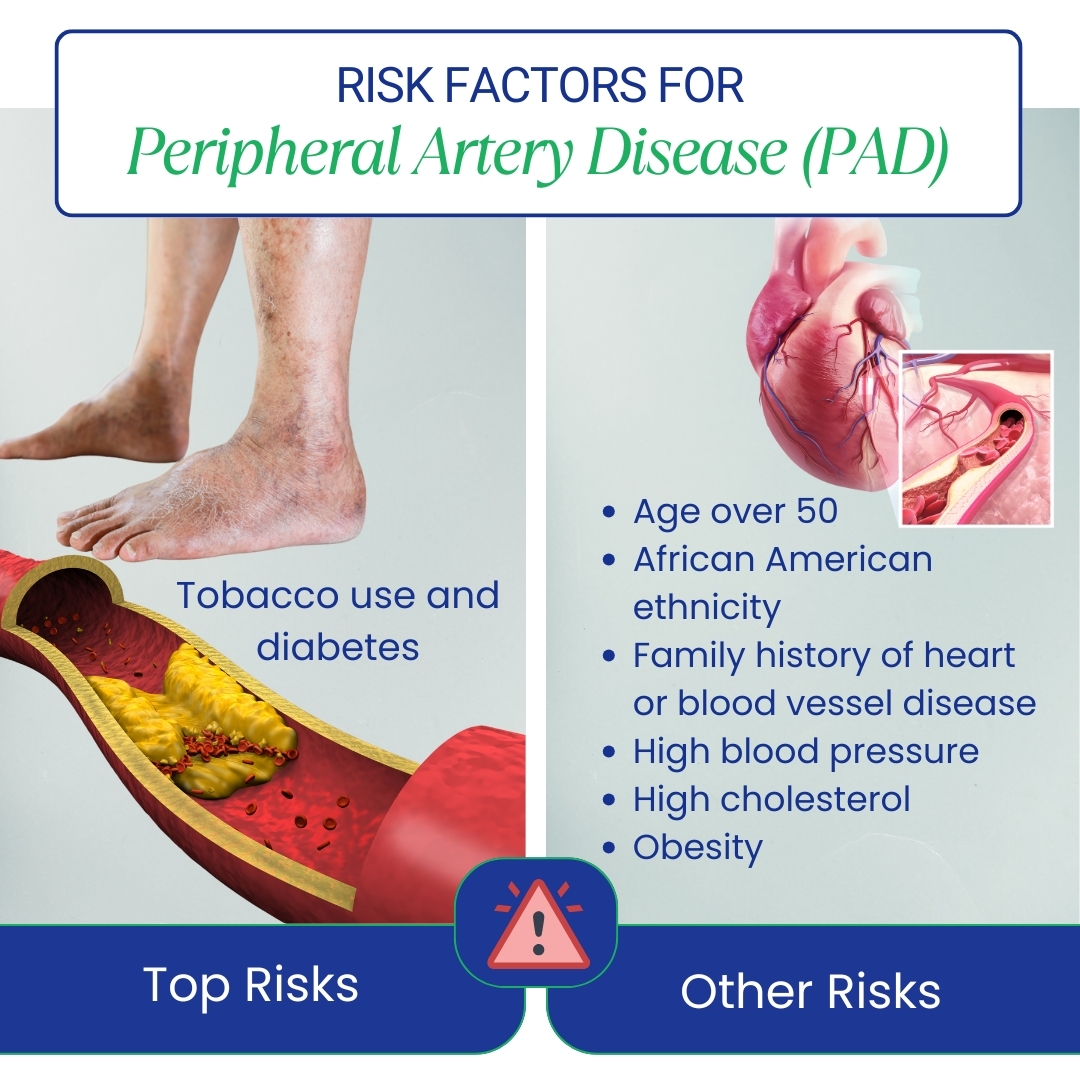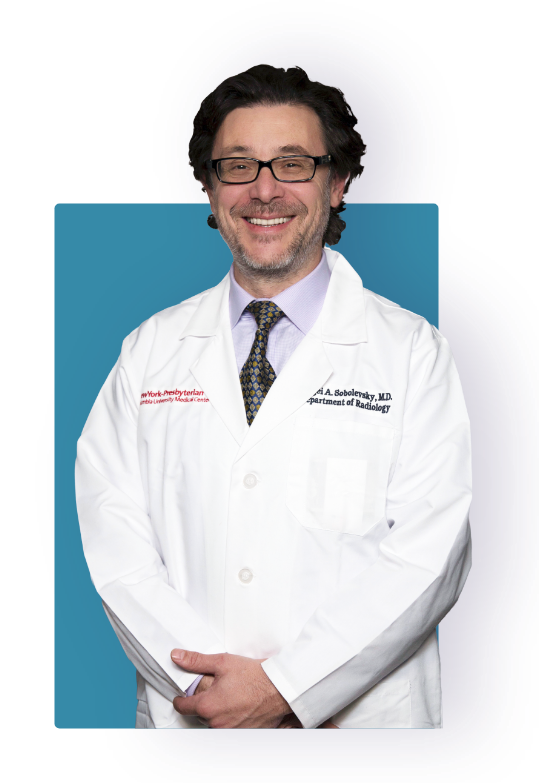Peripheral artery disease, often referred to as PAD, is a condition that can causes pain and non-healing ulcers in your extremities, primarily in your feet and legs. It’s caused by blocked arteries, usually due to poor lifestyle choices, such as smoking, and other underlying conditions, such as diabetes or high cholesterol. Exceptional peripheral artery disease treatment, including new treatments for PAD, are available in Brooklyn at the Downtown Vein & Vascular Center. Serving all the neighborhoods of Brooklyn and greater New York City, the practice is widely respected for their state-of-the-art facilities and significant success rate in PAD treatment. Call today for a consultation with an experienced specialist Dr. Sobolevsky.
What Is Peripheral Artery Disease (PAD)?
Peripheral artery disease (PAD) is a condition that occurs when your blood flow is reduced due to narrowed arteries in your arms or legs. PAD is a common condition that may have no or few symptoms in the early stages, but it may become symptomatic as it progresses.
Peripheral artery disease treatment should be administered early for the best results. If it’s left untreated, complications sometimes lead to more serious conditions, such as gangrene that requires an amputation. PAD affects nearly 12 million Americans, but the actual number is probably higher.
Rely on the best vascular specialist at the first indication of the disease to receive a timely diagnosis that leads to the most effective peripheral artery disease treatment. In Brooklyn, rely on the professionals at the Downtown Vein & Vascular Center for the most up-to-date care and new treatments for PAD.

What Causes Peripheral Artery Disease?
The cause of PAD is a condition called atherosclerosis. This is when plaque, made up of fats and cholesterol, collects along the walls of your blood vessels. PAD makes it more difficult for your blood to get nutrients and oxygen to the tissues in your legs or arms.
Healthy arteries are hollow tubes with a smooth lining. Your arteries allow blood to flow easily through them. When plaques build up on the arterial lining, they narrow these arteries, inhibiting the blood flow. These plaque deposits can also cause blood clots to form, which leads to more damage.
It’s not easy to know if you have PAD, but the most common symptom is claudication. This is a term for leg pain that occurs when the muscles in the limbs don’t receive enough oxygen. This leg pain appears when walking or exercising, and it goes away when resting. Other symptoms indicating you may have PAD include:
- Burning or aching foot pain while at rest
- Coolness in your lower leg or foot
- Numbness in your feet or legs
- Changes of skin color on your legs
- Leg cramps at night
- Sores or infections on your toes, feet or legs that won’t heal
- Loss of hair on your legs
- Pain or cramps in your arms when doing a manual task
- Muscle pain or cramps in your legs or arms during exercise
- Pain or cramps of muscles in your hip, thigh or calf after climbing stairs
- Severe limb pain (CLI)> when you’re at rest.
- Gangrene
Peripheral Artery Disease Treatment Experience
★ ★ ★ ★ ★
Great Results
Dr. Sobolevsky’s vein treatment gave me great results. The procedure was painless and the recovery time was minimal. I appreciate his expertise and would highly recommend him to anyone seeking vein treatment.
What Are the Risk Factors for Peripheral Artery Disease?
The most important risk factors for getting the disease are tobacco use and diabetes. But there are other risk factors as well. Your chances of having the disease are higher if you are:
- Older than 50 years of age
- African American
- From a family with a history of blood vessel or heart disease
In addition to diabetes, certain medical conditions increase your risk of developing PAD, such as:
- High blood pressure
- High cholesterol
- Obesity
To determine whether you have PAD, you may undergo a number of tests, which also give your NYC doctor a clear picture of the severity of your condition. Tests include:
- Ankle-brachial index (ABI)
- Pulse volume recording (PVR)
- Diagnostic vascular ultrasound
- Angiogram
Once your physical exam, medical history and non-invasive vascular testing confirms PAD, you and the doctor discuss which new treatments for PAD will be the most effective for you.

What’s the Best Peripheral Artery Disease Treatment?
While the disease is chronic, PAD can be improved and controlled with some basic changes in your lifestyle. These include giving up tobacco, getting regular exercise and eating less fat. A variety of PAD treatments are used today to lessen the pain and discomfort of PAD, including:
- Angioplasty or balloon angioplasty
- Artery bypass graft or artery bypass surgery
- Atherectomy
- Arterial bypass
- Recanalization
- Revascularization
If you delay treatment for PAD, you run the risk of serious complications, such as a non-healing ulcer or gangrene, which may lead to an amputation. Peripheral artery disease affects people in different ways. The amount and location of the atherosclerotic plaques — and your overall health — play a role. Some people deteriorate faster than others. Seeking PAD treatment early increases the probability of a better outcome. In the Brooklyn, NY area, contact the professionals at the Downtown Vein & Vascular Center. They have the training and experience you need to treat peripheral artery disease.

I am Dr. Sergei Sobolevsky, a leading specialist in endovascular medicine. Having performed over 25,000 procedures throughout my career, I bring decades of experience in vascular and interventional radiology to my practice. I obtained my Doctor of Medicine (MD) degree from the University of Colorado School of Medicine in 1997 and completed my specialty clinical training in vascular and interventional radiology at Harvard University.
My dedication to excellence in patient care has been recognized through accolades such as being named a Castle Connolly Top Doctor and inclusion in the Top Doctors New York Metro Area lists for 2020, 2021, 2022, and 2023. With licenses in multiple states, I have also shared my expertise through presentations at various institutions in the US and abroad.
More About Dr. SobolevskyDowntown Vein Treatment Center
480 Court Street, Ste 101
Brooklyn, NY 11231
(718) 787-5559


